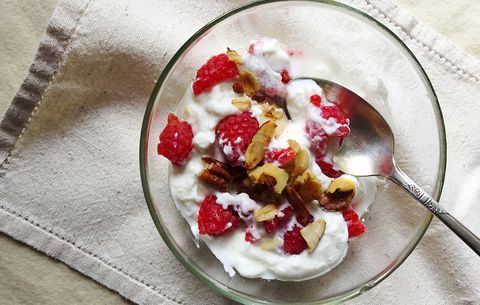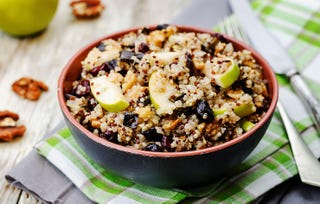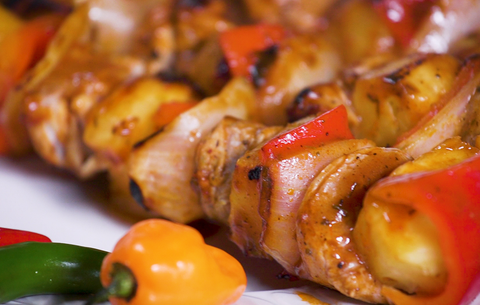
What mom said is true: breakfast is the most important meal of the day. And while it’s not necessarily true that having a hearty breakfast every morning will help you magically shed pounds, it is true that people who eat large breakfasts and smaller lunches and dinners have lower BMIs, according to a study in the Journal of Nutrition. It’s also true that breakfast eaters have a lower risk of heart disease, high blood pressure, and high cholesterol than people who skip their a.m. meals.
Why is this the case? Well, some doctors believe our digestive systems perform best in the mornings. Some experts even believe that eating at night could make our bodies hold onto more fat because we don’t produce enough insulin to keep our blood sugar levels stable, according to a report in the New York Times.
So instead of carbo-loading in the afternoon or at night, try eating several small meals throughout the day and consuming roughly 30% to 35% of your daily calories in the morning. You’ll feel full all day and give your body a chance to burn off what you took in.
That’s why Men’s Health developed a weight loss plan that includes two (two!) small breakfasts. Adapted from the 2011 book The Men’s Health Diet, these guidelines will help you lose weight without feeling hungry or energy-deprived.
Breakfast #1

Getty Images

The foods: Aim to include protein-packed dairy like Greek yogurt as well as whole grains, and fiber. Protein in milk and other dairy products can increase muscle protein production, helping to promote muscle growth and fat loss after exercise.
If you typically skip breakfast, start out small, with a glass of milk or a slice of cheese with whole wheat toast. If you usually start the day out with heartier fare, you may need to fill up with something like walnut-flaxseed oatmeal with yogurt and blueberries. And don’t skimp on the nuts: just one tablespoon of nuts can add a satisfying crunch and five grams of protein to your breakfast, providing a satisfying start to your day.
Breakfast #2
The foods: A lot of guys don’t have the time (or stomach) to power down a third of their daily calorie allowance first thing in the morning. So breaking up the meal into two small, roughly equal parts allows you to start your day without feeling weighed down. You could begin the day with a piece of toast and cheese, then eat a small cup of yogurt and fruit once at the office (or vice versa!).
The goal is to load up on calories. Your first and second breakfast combined should make up slightly more than a third of your daily calorie allowance.
Lunch
Shutterstock
The foods: Vegetables, beans, fruits, nuts, and whole grains. Think soups and salads. (In fact, a study from Louisiana State University found that guys who eat salad once a day are more likely to get their recommended daily intake of essential nutrients.) The healthiest diets are often those that include the most colors, so be sure to throw on plenty of vegetables like carrots, which are full of antioxidants, and yellow bell peppers, which are loaded with vitamin C.
Dinner
Men's Health
The foods: Leafy greens and other vegetables, lean meats, fish, beans, and legumes. A simple meal like pork kebabs are low in fat and high in protein, and they can be served on top of a simple green salad. The goal is to keep your portion sizes down: a Penn State study found that eating a low-calorie salad before a main course can decrease overall food intake by up to 12 percent.
Snacks
The foods: Yogurt, berries, walnuts, red bell peppers with cottage cheese, whole-grain cereal with milk, and apples and cheese. If you get hungry between meals, snacking can help keep you satisfied when dieting. In fact, studies suggest that people who eat less often than three times a day may have trouble controlling their appetite. So don’t deprive yourself. Just make sure you’re picking whole foods over processed crackers and chips.
Adapted from The Men’s Health Diet by Stephen Perrine.
Source: Read Full Article

